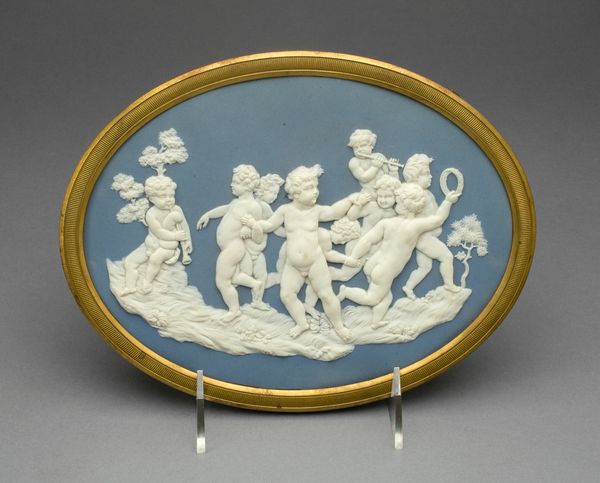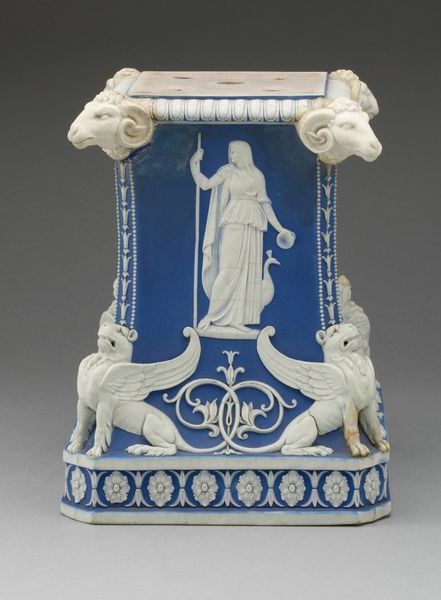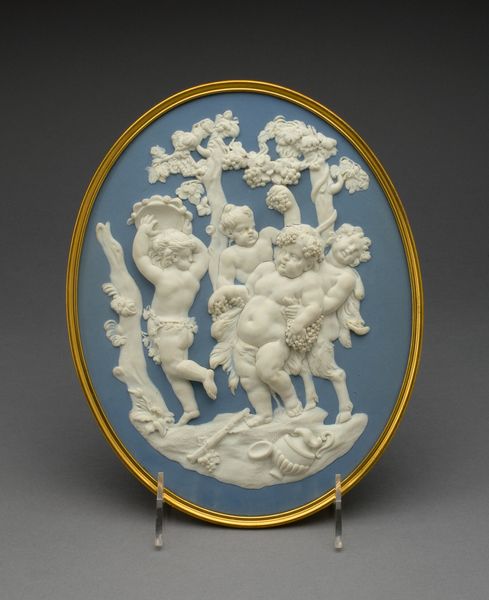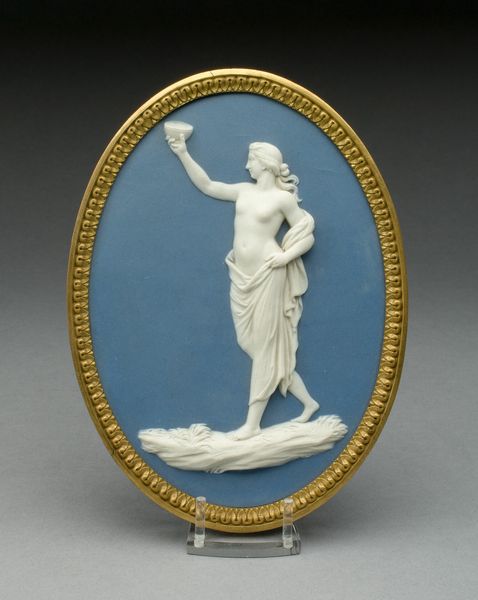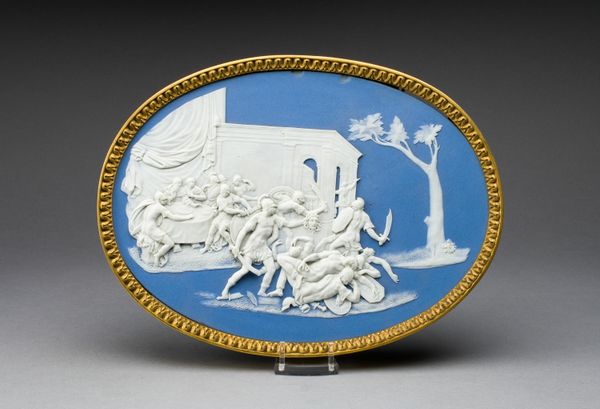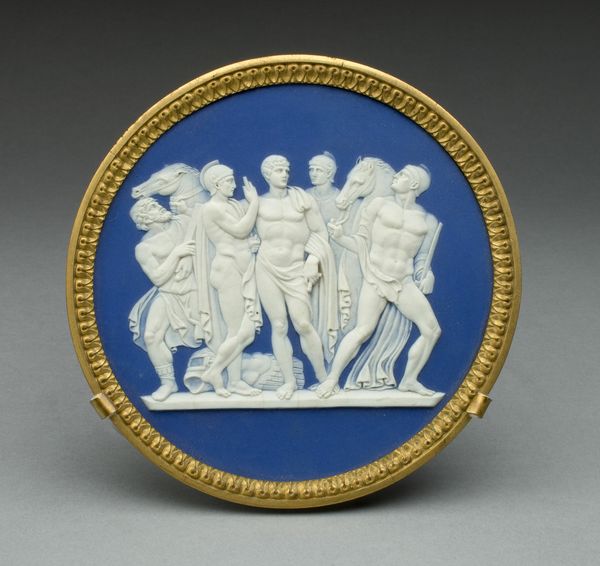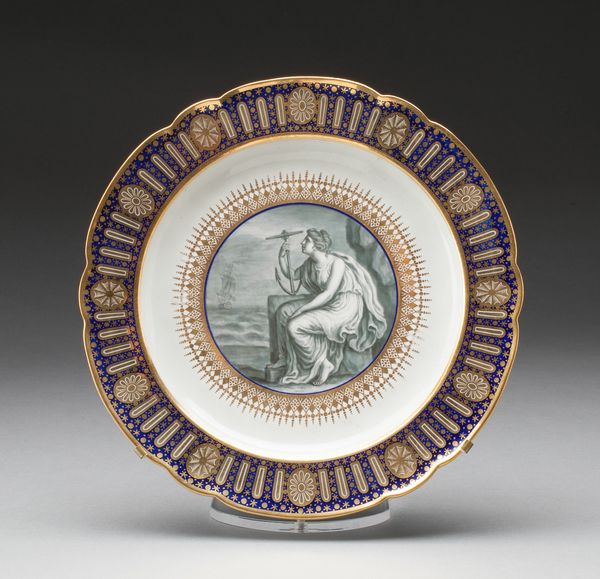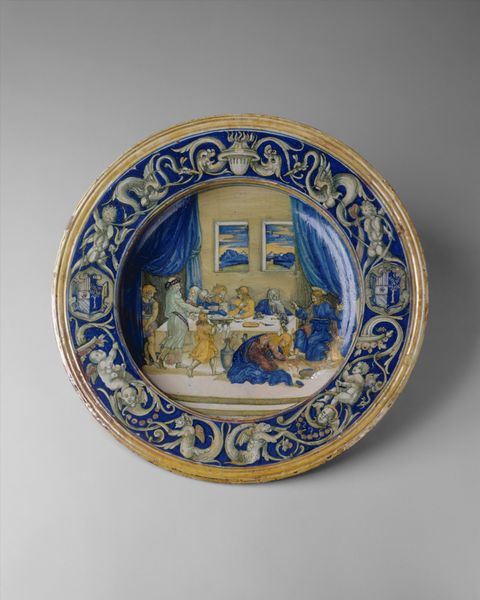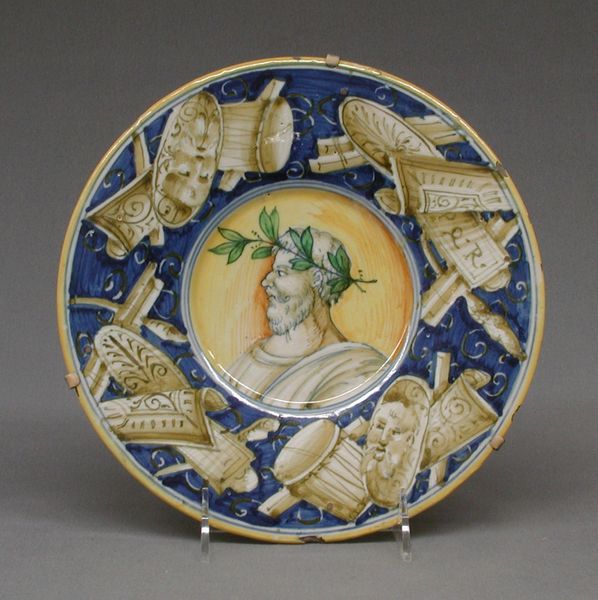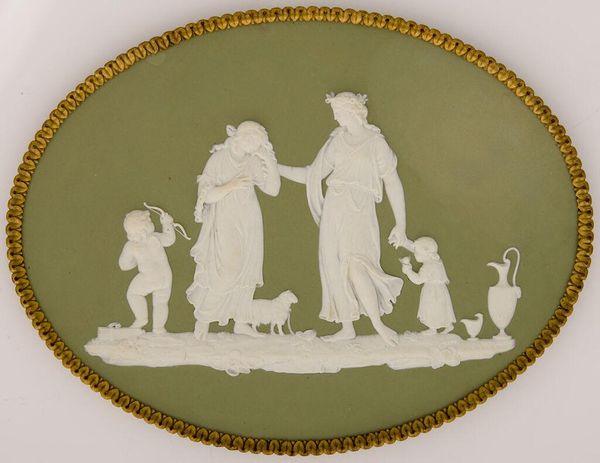
relief, ceramic, sculpture
#
neoclacissism
#
allegory
#
relief
#
ceramic
#
classical-realism
#
figuration
#
form
#
ancient-mediterranean
#
sculpture
#
ceramic
#
decorative-art
Dimensions: 17 × 22.4 cm (6 11/16 × 8 13/16 in.)
Copyright: Public Domain
Curator: The first impression this ceramic plaque makes is undeniably elegant and serene. There is something very dreamlike in its aesthetic. Editor: Indeed! We're looking at a piece titled "Plaque with Bacchus and Two Bacchantes," made around 1789 by the Wedgwood Manufactory. Currently, it resides here at The Art Institute of Chicago. The crisp, raised white figures against that vivid blue ground, enclosed by the ormolu border... it evokes a sense of classical refinement, doesn't it? Curator: Absolutely. That distinctive Wedgwood blue—it just pulls you in, doesn't it? The way the figures almost float above it... Bacchus looks so calm, dignified, as if slightly detached from the revelry around him. I almost wish it were possible to get a hold of, imagine holding such grace within one's palms! Editor: Well, the piece speaks to the Neoclassical revival that was then influencing decorative arts and design. Wedgwood became renowned for these types of jasperware reliefs, adapting classical imagery for a contemporary audience. These weren't just art pieces; they were statements about taste, status, and connection to a European intellectual tradition that defined itself against monarchy, nobility, and high ecclesiastical authorities. Curator: So, Bacchus wasn't just an excuse for pretty scenery? He was standing in opposition of sorts? It is delightful how history can take any icon and turn it into something defiant, Bacchus as we all remember him! He makes a perfect representation against established dogmas. Editor: I see the way Wedgwood's piece invites us to rethink our present from the lessons of antiquity. Curator: You are right. Though I still cannot shake its dreamy aesthetic, the scene appears almost suspended. Knowing this, one can interpret that quality as both idyllic and aspirational—a vision of harmony, and the pursuit of enlightened ideas. Editor: I suppose it demonstrates the era's complex relationship to the past, and how cultural movements find expression within everyday items. Curator: Precisely. What might initially appear as a charming decorative object reveals itself to be a window into history and a very canny one, at that!
Comments
No comments
Be the first to comment and join the conversation on the ultimate creative platform.



